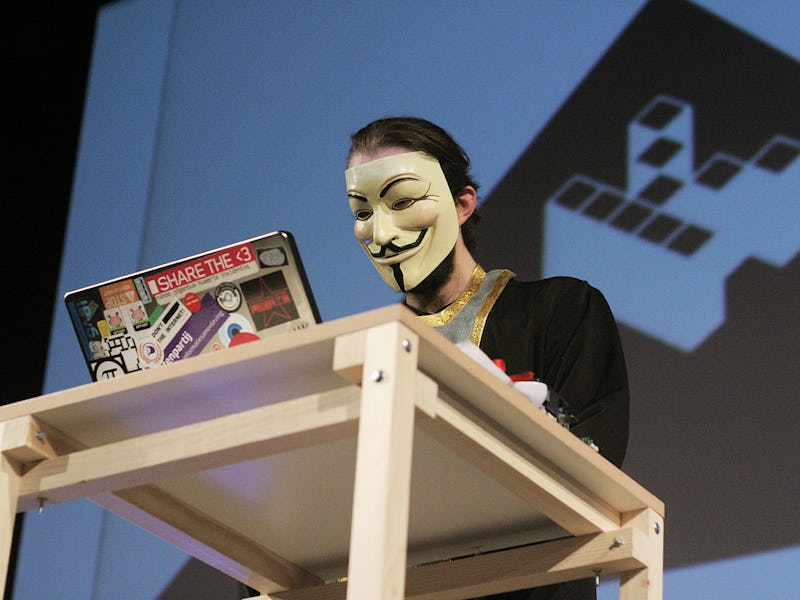The Invented Religions of Today Would Have Made Zero Sense 100 Years Ago
Faiths grounded in pop culture, the internet, and aliens are so 2016.

While the number of religious Americans is decreasing, there are still a ton of people out there adhering to a heavenly force. An estimated 2.2 billion people consider themselves Christian, while there are an estimated 1.6 billion Islam adherents and 1 billion Hindus. A growing number of people, particularly young people, have begun to identify as Pagans — remaking ancient forms of faith for a modern world.
But the inherent modernness of a modern world also dictates that people will look to sustain their spirituality with completely new forms of religion. Outsiders to these sects may dismiss them as parodies of faith, but that’s the thing about religion — if someone says they believe, it’s not your place to say they don’t. The following religions are recognized by few, if not zero, government powers-that-be but their focus on technology and the cosmos make them movements that very much reflect the present.
Kopimism
In 2012, the Swedish government officially recognized the Church of Kopimism as a religion after three tries over the course of a year. Founded by Isak Gerson, followers of Kopimism believe that the search and circulation of knowledge is sacred. Copying and sharing this knowledge, called “kopyacting,” is their religious vehicle for spreading this knowledge. The copy and paste short cues CTRL+C and CTRL+V are considered sacred symbols.
Isak Gerson speaking at a Church of Kopimism event.
In an interview with New Scientist, Gerson said he believes all file-sharing should be legal and that current copyright laws are “very problematic.” When asked if he and his flock of 3,000 are just trying to make a point, Gerson replied with a decisive, “We’ve had this faith for several years.”
Church of the Flying Spaghetti Monster
On the site of the media-darling Church of the Flying Spaghetti Monster, it’s repeatedly written that their church is not a joke — a cheeky nod until you realize there is an element of sincerity there.
“Elements of our religion are sometimes described as satire and there are many members who do not literally believe our scripture, but this isn’t unusual in religion,” reads an official statement. “Some Pastafarians honestly believe in the FSM, and some see it as satire. I would just make the point that satire is an honest, legitimate basis for religion. Satire relies on truth to be effective.”
The FSM.
To the uninitiated, Pastafarians are the followers of the Church and they worship the FSM — Flying Spaghetti Monster. They await beer and many strippers in the afterlife. Officially formed in 2005 in the United States, the religion has been officially recognized in Poland and is currently seeking recognition in Germany. Sincere believers in the FSM notwithstanding, Pastafarians around the world have used their Church as a commentary on the privileges given to mainstream religions. In 2011, Austrian Niko Alm won the right to wear a colander on his head for an official license, which he claimed was his religious headgear.
Jediism
The Church of Jediism was formed in 2007 by Daniel Jones, but Jediism first hit the mainstream as a everyman movement in the early 2000s, when people across the world banded together to get Jediism as an officially recognized religion on government censuses. While thousands of people have declared Jediism their religion, it has yet to be officially recognized as a religion in any country.
Some Jedi in London, UK.
While some say they’re Jedi as part of an internet prank, many followers legitimately believe in the power of the Force. They have official gatherings and follow official texts. The Force, to them, is a very real energy and similar to — if not the same — energy that is acknowledged in faiths like Christianity and Hinduism.
Matrixism
As of 2008 there were about 2,000 people who identified with Matrixism, although Facebook activity indicates the faith seems to have lost some speed. According to the Handbook of Hyper-real Religions by Australian professor of sociology Adam Possamai, Matrixism came on the scene in 2004 as a combination of the monotheistic Bahá’í faith and The Matrix franchise.
People who follow Matrixism are called Matrixists, Futurists, or Redpills and see the The Matrix films as a narrative metaphor for their beliefs. Included in these beliefs: belief in the prophecy of The One, the acceptance of the use of psychedelics as sacrament, and recognition of the multi-layered nature of reality. They also chose the Japanese kanji symbol for red as an icon of Matrixism — representative of the red pill offered by Morpheus that, if swallowed, awakens recognition of the hyper-reality of the Matrix.
Raëlism
Founded by pop-star-turned-race-car-driver-turned-prophet Claude Vorilhon in 1974, Raëlism teaches that aliens created the human race in their image. Specifically, these aliens are the Elohim, and have previously sent prophets like Jesus and Buddha to try to get us hip to the idea that we were aliens.
South Korean members of the Raëlian movement.
Raëlists also believe that paradise is a society without work or money, which is achievable through the replacement of human work by robots. No one besides Vorilhon has met the Elohim. He changed his name to Raël in the early 1970s after he claimed he met aliens.